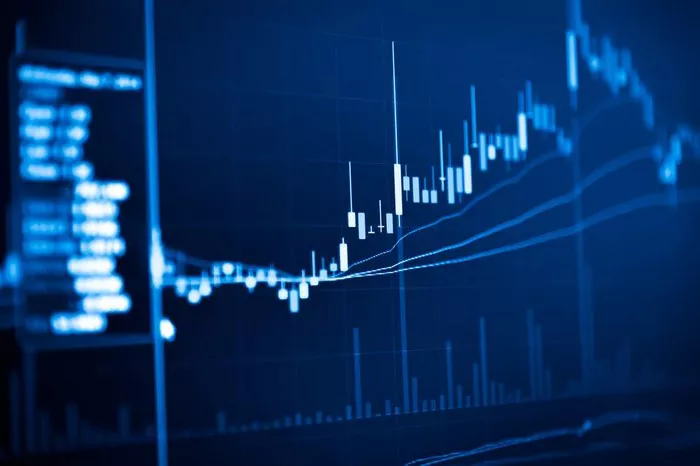Corn futures trading is a popular commodity trading strategy used by traders to speculate on the price movements of corn. Corn is an essential grain that is widely used as a source of food, fuel, and animal feed. As a result, the corn market is highly liquid and attracts traders from around the world. In this article, we will provide a comprehensive guide on how to trade corn futures.
Understanding Corn Futures
Corn futures are standardized contracts that represent the future delivery of a specific amount of corn at a predetermined price. Corn futures are traded on commodity exchanges, such as the Chicago Mercantile Exchange (CME) and the Intercontinental Exchange (ICE). The corn futures contract size is 5,000 bushels, and the minimum price fluctuation is 1/4 of a cent per bushel.
The price of corn futures is influenced by various factors, such as weather conditions, crop yields, demand for corn-based products, and government policies. As a result, corn futures prices are highly volatile, which presents opportunities for traders to profit from price movements.
Steps to Trade Corn Futures
-
Step 1: Choose a Broker
The first step in trading corn futures is to choose a reputable broker. The broker should be registered with the Commodity Futures Trading Commission (CFTC) and should have access to the corn futures market. The broker should also offer competitive trading fees, a user-friendly trading platform, and reliable customer support.
-
Step 2: Open a Trading Account
After choosing a broker, the next step is to open a trading account. The trader will need to provide personal information and complete the account opening process. The broker may also require the trader to provide proof of identity and address.
-
Step 3: Fund the Trading Account
The trader will need to fund the trading account to start trading corn futures. The amount required to fund the account varies depending on the broker’s requirements. Traders can fund their accounts using various payment methods, such as bank transfer, credit/debit card, and e-wallets.
-
Step 4: Learn Technical Analysis
Technical analysis is an essential tool in corn futures trading. Traders use technical analysis to analyze price charts and identify trading opportunities. Technical analysis involves using various indicators, such as moving averages, relative strength index (RSI), and stochastic oscillators. Traders can learn technical analysis by attending trading courses, reading trading books, or watching trading videos.
-
Step 5: Analyze Fundamentals
Fundamental analysis is another crucial tool in corn futures trading. Traders use fundamental analysis to analyze the supply and demand factors that influence the price of corn futures. Fundamental analysis involves studying various reports, such as crop reports, export data, and weather forecasts. Traders can access fundamental analysis reports from various sources, such as the United States Department of Agriculture (USDA) and other agricultural organizations.
-
Step 6: Develop a Trading Plan
A trading plan is a set of rules that guides a trader’s trading decisions. A trading plan should include entry and exit strategies, risk management rules, and trading goals. Traders should develop a trading plan that suits their trading style, risk tolerance, and financial goals.
-
Step 7: Practice Trading
Before trading with real money, traders should practice trading using a demo account. A demo account is a simulated trading account that allows traders to trade using virtual money. Traders can practice their trading strategies and test their trading plan using a demo account.
-
Step 8: Start Trading
After completing the above steps, traders can start trading corn futures. Traders should monitor the market closely and adjust their trading strategies based on market conditions. Traders should also follow their trading plan and manage their risk carefully.
Risk Management
Risk management is a crucial aspect of corn futures trading. Traders should use risk management strategies to protect their trading capital from losses. Some risk management strategies that traders can use include:
- Stop Loss Orders: A stop loss order is an order to sell a contract if the price falls to a certain level. Traders can use stop loss orders to limit their losses if the market moves against them.
- Position Sizing: Position sizing is a method of determining the number of contracts to trade based on the trader’s account size and risk tolerance. Traders should only risk a small percentage of their trading capital on each trade.
- Diversification: Traders can diversify their portfolio by trading multiple commodities, such as soybeans, wheat, and cotton. Diversification can help reduce the risk of a single commodity affecting the trader’s portfolio.
- Hedging: Traders can use hedging strategies to reduce their exposure to price movements. For example, a farmer who grows corn can hedge against a price drop by selling corn futures.
Conclusion
Corn futures trading is a lucrative trading strategy that offers opportunities for traders to profit from price movements. However, traders should be aware of the risks involved and use risk management strategies to protect their trading capital. By following the steps outlined in this article and developing a solid trading plan, traders can successfully trade corn futures.


